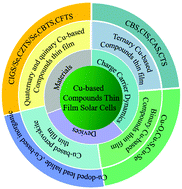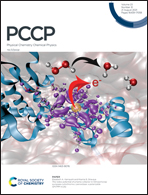Environment-friendly Cu-based thin film solar cells: materials, devices and charge carrier dynamics
Abstract
Cu-based thin films are ideal absorbing layer materials for new-generation thin-film solar cells, which have many advantages, such as environment-friendly components, abundant raw materials, low cost, simple manufacturing process, strong anti-interference, radiation resistance, high light absorption coefficient and suitable band gap. Copper indium gallium selenide (CIGS) thin-film solar cells, which have the highest photoelectric conversion efficiency (23.35%) among the various Cu-based materials, have been intensively investigated and exploited. To promote the progress of Cu-based thin-film solar cells, the rational design of efficient materials and devices and the in-depth understanding of their photophysical mechanisms are not only urgently required, but also have plenty of room for research. Accordingly, herein, we firstly define the concept of “Cu-based materials”, and further present a comprehensive review on the materials (design and fabrication), devices (assembly and performances), and charge carrier dynamics of Cu-based thin-film semiconductor materials, including perovskites, oxides, chalcogenides (binary, ternary, quaternary and quinary) and perovskite-like iodides. In addition, the current challenges and prospects in this topic are critically concluded. Particularly, this review may help researchers focused on investigating thin-film solar cells.

- This article is part of the themed collection: PCCP Perspectives


 Please wait while we load your content...
Please wait while we load your content...